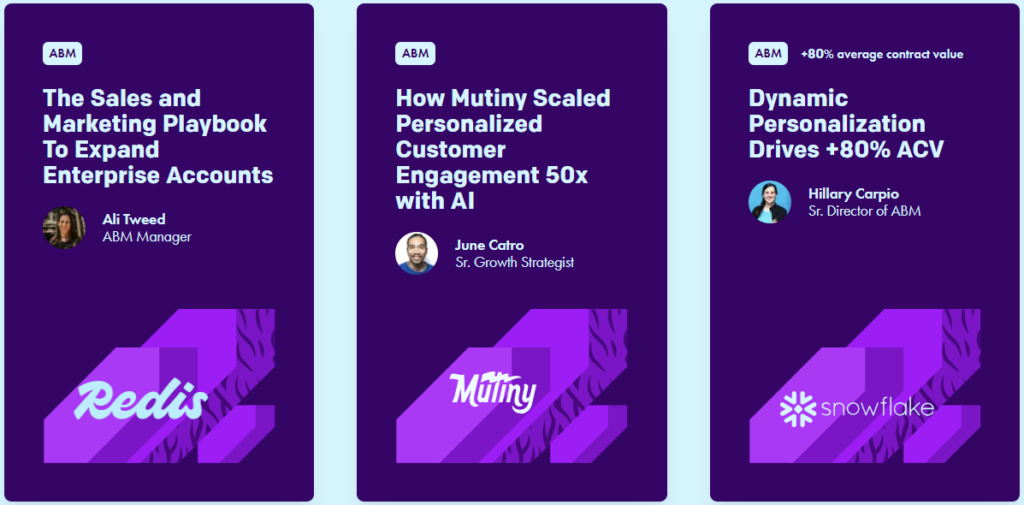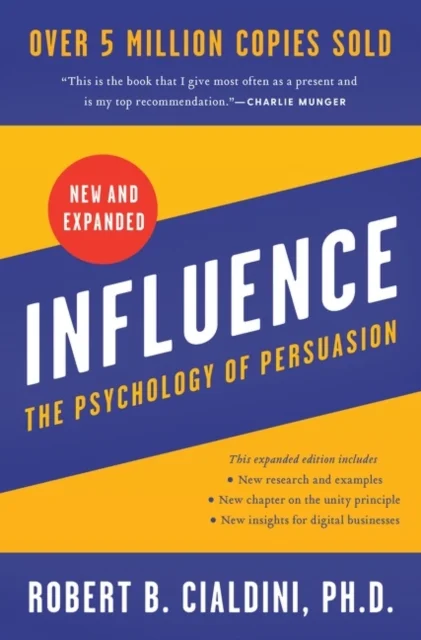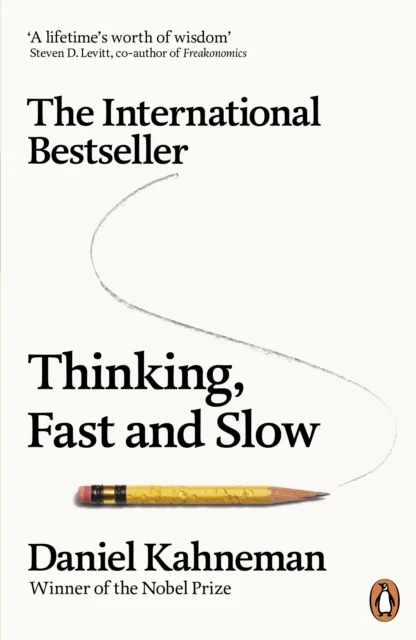Yesterday, I found myself at a networking event organized by Young NPF in Stavanger. You know the type—lots of handshakes, nodding, and trying to understand what people are doing for a living.

After a short presentation on decision-making, I got the chance to chit-chat with Peyman Kor, a guy who really knows his stuff when it comes to how we make decisions (he’s written some great articles on Medium, by the way).
So, there I am, listening to him break down how our brains sometimes sabotage our own decision-making, and I thought, “Wait, can I actually use this to help B2B buyers decide faster when they’re scrolling through my SaaS website?“
I mean, think about it—convincing someone to buy a complex B2B solution is hard enough. What if I could apply Peyman’s ideas to make that decision feel a little less like pulling teeth? Could understanding how decisions work give me an edge in converting those visitors from “just browsing” to “take my money now”?
This thought stuck with me, and I couldn’t shake it. So, here we are. Let’s find out how we can use these decision-making insights to help B2B buyers confidently click that all-important “Request Demo” button on your site.
And hey, who knows? Maybe it’ll make all our lives just a little bit easier in the process.
Why do our brains struggle with decisions?
Let’s start with the bad news: our brains are not exactly decision-making machines. If anything, they’re more like those old computers that take forever to load a simple webpage. We all know the feeling, right? You’re hovering over a button on a website, fully aware you should probably click it, but instead, you start thinking of a million other things:
- “Is this the right product?”
- “What if there’s a better deal?”
- “Maybe I should just wait.”
This happens because, as Peyman Kor explains in his article “Your Decisions Could Be Killing You”, making decisions can actually be pretty overwhelming for our brains, which have to deal with two different systems:
- A fast-thinking system, which is like the autopilot of decision-making. It’s quick, almost automatic, and handles most of the decisions we make every day. These are the easy, low-risk decisions—like deciding what to eat for lunch or whether to check your email. It doesn’t require much information, and it’s efficient because it saves brain energy. We’re happy to make these quick decisions and move on.
- A slow-thinking system, which is more like the brain’s heavy-duty processor—it kicks in when decisions are complex, uncertain, or involve higher stakes, like the ones in the B2B buying process. This system takes its time, requiring logical reasoning, careful analysis, and a lot more information. It’s much more expensive for the brain in terms of energy and effort, which is why we tend to avoid it unless it’s absolutely necessary.
We’ve got so many choices these days that it can lead to something called decision paralysis. Our minds freak out over the pressure of making the “perfect” choice, and before you know it, we either postpone the decision or avoid it completely. And guess what? Your B2B buyers are no different.
Now, imagine them landing on your SaaS website, already dealing with their day-to-day stress.
They know they need a solution, but just like you with that “buy now” button, they hesitate:

Maybe your product is exactly what they need, but their brain is doing its usual dance:
- “What if this isn’t the best option?”
- “What if I make a mistake?”
- “Should I compare more products first?”
The funny thing is, it’s not always about logic. Our brains are wired to take shortcuts, called cognitive biases, to make decisions easier. Sometimes these shortcuts work. Other times? Not so much.
In the B2B buying process, buyers rely on slow thinking because they’re making important decisions that can impact their company in the long run. They’re not grabbing the first solution they see—they’re evaluating options, comparing features, considering risks, and weighing potential outcomes. All of this takes time and effort, and uncertainty in this process makes it even harder.
B2B buyers might rely on emotional factors or quick assumptions rather than going through all the logical steps. So even if your SaaS product is top of the line, if their brains are in panic mode, they might not make a decision at all.
Here’s the kicker: according to Peyman’s insights, one of the biggest challenges is not just giving buyers all the information they need but guiding them in a way that makes the decision process feel easier. It’s not about bombarding them with every possible detail—sometimes, it’s about reducing the mental load and helping them feel confident in taking that next step.
Redefining success in the B2B buying process
We think that a good decision is one that leads to a perfect outcome.
Spoiler alert: it’s not.
And it’s a bit of a lightbulb moment, especially if you’re in the business of trying to influence buying decisions.
Let’s face it—how many times have you made a decision that didn’t turn out quite the way you hoped? Maybe you picked the wrong software, hired the wrong agency, or signed up for a webinar that promised “secrets to success” and delivered nothing but basic tips.
Does that mean you made a bad decision? Not always. Sometimes, the decision-making process itself was solid, even if the result wasn’t exactly what you wanted.
Now, when it comes to the B2B buying process, this is a crucial insight. Your buyers aren’t just looking for the perfect product or service. Often, they’re trying to make a decision that feels safe—a decision they can defend to their boss, their team, or even just themselves. The pressure to choose the “right” solution can lead to hesitation, or worse, no decision at all.

That’s where your marketing comes in. Your goal shouldn’t just be to sell the product, but to make the decision-making process feel easy and confident. A buyer might not remember every little detail about your SaaS solution, but they’ll definitely remember how you made them feel throughout the process:
- Was your website clear?
- Did you provide straightforward product comparisons?
- Was there a low-risk option, like a free trial, that made it easier to take that first step?
Peyman pointed out during its presentation that success isn’t always about the result, but about how we arrive at that result. In the B2B buying process, that means giving buyers a sense of control, reassurance, and, most importantly, making it as simple as possible for them to make that decision without regret.
Note: Even if your SaaS product is the best on the market, if navigating your website feels like solving a puzzle, you’re going to lose them. B2B buyers are juggling a lot of responsibilities, and they want a decision that doesn’t add more stress to their lives. So, while we often think success is getting that big ‘yes’ sometimes it’s about making sure buyers feel like they can’t go wrong by choosing you.
Convincing buyers to take action on your website
Now we know that making decisions can be tricky and that success is more about how we get there than the result itself. But how do you actually get B2B buyers to take that all-important step from thinking to doing? After all, in the B2B buying process, we’re not talking about impulse purchases. These buyers are thoughtful, cautious, and they’re often dealing with long, uncertain, sales cycles and high stakes.
Humans hate uncertainty, and the B2B world is full of it. Buyers aren’t just making a small decision—they’re often choosing a solution that will affect their business long-term. The more uncertain they feel, the harder it is for them to move forward. This is where the concept of the “value of information” comes into play.
So, how do we nudge them in the right direction without overwhelming them?
Your website needs to be their decision-making buddy!
I’m not talking about a pushy salesperson-style buddy, but the kind of friend who helps you figure things out without making you feel like you’re being rushed.
First, let’s start with the basics: clear CTAs (calls-to-action):
Your B2B buyers don’t want to hunt around for what to do next. Make it easy. Whether it’s “Request a Demo”, “Download the Whitepaper” or “Start Free Trial”, the path forward should be obvious and feel natural.
But a good CTA isn’t just about what it says; it’s about how it fits into the flow of the page and the whole B2B buying process. Each step on your site should build confidence, not confusion.
Next, think about decision aids:
Remember how we talked about reducing mental load? One of the best ways to do this is by using calculators, comparison tools, customer testimonials, and case studies:

B2B buyers love data, but they also need stories that show how others like them have succeeded with your solution. It’s one thing to list features; it’s another to say: “Look, this company had the same problem as you, and here’s how we helped them solve it.” It creates trust and lowers the risk in their minds:

Then, demos and trials:
Offering demos or trials isn’t just a marketing tactic—it’s a way of reducing uncertainty (remember, we talked about it already?). When a buyer gets to see, use, and play around with your product, it gives them valuable information they didn’t have before. Suddenly, it’s not just about reading features on a webpage; it’s about experiencing the solution firsthand. This reduces the unknowns and helps them feel more confident in their decision. By showing off the product or letting them test it, you’re not just selling—you’re guiding them through the fog of uncertainty and giving them the clarity they need to make the leap.

It’s a bit like dating, really. You wouldn’t commit to a relationship based solely on reading someone’s profile—you want to go on a date, spend time with them, and see if there’s a real connection. The same goes for B2B buyers; they want to “date” your product before they commit!
Finally, just keep it simple:
You don’t need to overwhelm your visitors with every piece of information at once. Buyers in the B2B buying process already have a lot on their plate, so make it easy for them to find what they need when they need it. Break down your content into digestible chunks. Use visuals and bullet points. Give them a clear journey—one that reassures them at every step.
The truth is, no matter how good your product is, if buyers can’t easily move through the B2B buying process on your site, they’ll move on to someone else who makes the process easier. Your job is to guide them, reduce their stress, and give them the confidence that they’re making a smart, well-informed decision.
In the end, understanding how decisions are made can make all the difference in helping your B2B buyers take action. Whether it’s simplifying the process, guiding them with clear calls-to-action, or just making them feel confident in their choice, it’s about creating a smooth experience that doesn’t overwhelm. If you can crack that, you’re already ahead of the game.
If you wanna know more about this very interesting topic, here is the short selection of books Peyman suggests:




Comments